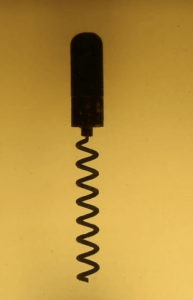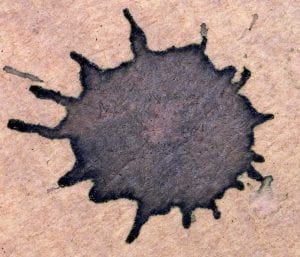Two-Phase Flows

One of our main interests is the study of two-phase flows. In the case of granular flows, the complexity of determining the behavior of these flows arises from the inelastic and frictional contacts among particles. For bubbly flows, the hydrodynamic interactions among bubbles give rise to velocity fluctuations, which, in turn, give a turbulent-like character to these flows. In both cases, significant developments have occurred over the last 15 years. My research group has actively participated in the collective effort to understand these systems better. We continue investigating different aspects of these flows, including the effect of non-Newtonian rheology in bubbly flows, the transition between viscous and collisional-dominated regimes in liquid-solid flows, the flow of bubbles in porous media, etc. Progress in this subject is driven by the interest in understanding the fundamental nature of two-phase flows, independently of having direct applications.
Key publications:
- Ravisankar, M. and Zenit, R., Elastic Pseudoturbulence in Polymer Solutions, Physical Review Letters, 135 (2), 024003, 2025.
- Dominique, L., and Zenit, R., Gas bubble dynamics, Review of Modern Physics, 97 (2), 025001, 2025.
- Atasi, O., Ravisankar, M., Legendre, D., Zenit, R., The presence of surfactants controls the stability of bubble chains in carbonated drinks, Physical Review Fluids, 8, 053601, 2023.
- Zenit, R. and Feng, J. J. Hydrodynamic interactions among bubbles, drops and particles in non-Newtonian liquids, Annual Review of Fluid Mechanics, 50, 505-534, 2018.
Biological Flows
 The understanding of many biological systems cannot be completed without analyzing the fluid motion implied in them. The study of such flows gives us a unique opportunity to explain many phenomena from a fundamental point of view. One approach is to study these systems, replicating exactly the biological conditions in a controlled environment. A better one is to simplify and model the problems by removing as many layers of complexity as possible, yet retaining the most relevant ones.
The understanding of many biological systems cannot be completed without analyzing the fluid motion implied in them. The study of such flows gives us a unique opportunity to explain many phenomena from a fundamental point of view. One approach is to study these systems, replicating exactly the biological conditions in a controlled environment. A better one is to simplify and model the problems by removing as many layers of complexity as possible, yet retaining the most relevant ones.
Our group has studied the flow-structure interaction in biological heart valve prostheses and the locomotion dynamics of microorganisms in
complex fluids.
Key publications:
- Das, A., Styslinger, M., Harris, D.M., Zenit, R., Force and torque-free helical tail robot to study low Reynolds number micro-organism swimming, Review of Scientific Instruments, 93, 044103, 2022.
- Esparza López, C., Gonzalez-Gutierrez, J., Solorio-Ordaz, F., Lauga, E., Zenit, R., Dynamics of a helical swimmer crossing viscosity gradients, Physical Review Fluids, 6, 083102, 2021.
- Gomez, S., Godinez, F.A., Lauga, E. and Zenit, R., Helical propulsion in shear-thinning fluids, Journal of Fluid Mechanics, 812, R3, 2017.
Artistic Painting and Fluid Mechanics
 Painting is, essentially, a fluid mechanical problem. Much research has been devoted to understanding the process of coating a solid surface with a fluid film since most man-made surfaces are painted. In general, the objective of painting is to cover a solid surface with a thin and uniform layer of paint. In the case of artistic painting, this is not exactly the case. Artists aim to create coating textures of aesthetic value to express their views. Hence, they learn to manipulate the fluid and the process in unique ways. They do this in an empirical manner through experimentation and many trial-and-error repetitions. Through a series of recent projects, inspired by art historians, my research group has been involved in understanding the physical principles of the painting techniques used by famous modern painters. We have studied the accidental painting technique by David Alfaro Siqueiros and the dripping technique by Jackson Pollock, and we have many other ongoing projects.
Painting is, essentially, a fluid mechanical problem. Much research has been devoted to understanding the process of coating a solid surface with a fluid film since most man-made surfaces are painted. In general, the objective of painting is to cover a solid surface with a thin and uniform layer of paint. In the case of artistic painting, this is not exactly the case. Artists aim to create coating textures of aesthetic value to express their views. Hence, they learn to manipulate the fluid and the process in unique ways. They do this in an empirical manner through experimentation and many trial-and-error repetitions. Through a series of recent projects, inspired by art historians, my research group has been involved in understanding the physical principles of the painting techniques used by famous modern painters. We have studied the accidental painting technique by David Alfaro Siqueiros and the dripping technique by Jackson Pollock, and we have many other ongoing projects.
Key publications:
- Zenit, R. Some fluid mechanical aspects of artistic painting, Physical Review Fluids, 4, 110507, 2019.
- Palacios-Muniz, B., Rosario, A. Wilhelmus, M. M., Zetina, S., and Zenit, R., Pollock avoided hydrodynamic instabilities to paint with his dripping technique, PLOS One, 14(10): e0223706, 2019.
- Zetina, S. Godinez, F.A., and Zenit, R. A hydrodynamic instability is used to create aesthetically appealing patterns in painting, PLOS One, 10, e0126135, 2015.
Other research subjects
 When we encounter an interesting problem related to fluid mechanics, we cannot say no. We have collaborated with several other research groups to study other subjects, including flow through porous media, convective heat transfer, mixing, etc. Please see the publication list for a full account of all research interests.
When we encounter an interesting problem related to fluid mechanics, we cannot say no. We have collaborated with several other research groups to study other subjects, including flow through porous media, convective heat transfer, mixing, etc. Please see the publication list for a full account of all research interests.
Key publications:
- Ravisankar, M., Federle, M., Bahadori, M., Das, A., Kesari, H., and Zenit, R., The mechanics of the squash nick shot, Proceedings of the National Academy of Sciences, 122 (20), e2505715122, 2025.
- Beltran, A., Chavez, O., Zaldivar, J., Godinez, F., Garcia, A., and Zenit, R., A new model for the computation of the formation factor of core rocks, Journal of Structural Geology, 97, 189-198, 2017.
- Palacios-Morales, C.A., J.P. Aguayo-Vallejo, Trujillo-Roldan, Zenit, R., M.A., Ascanio, G., Cordova-Aguilar, M.S., The flow inside shaking flasks and its implication for mycelial cultures., Chemical Engineering Science, 152, 163-171, 2016.
- Martin, R. and Zenit, R. Heat transfer resulting from the interaction of a vortex ring with a heated wall, Journal of Heat Transfer, 130, 051701, 2008.

